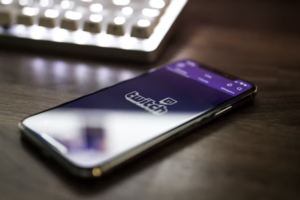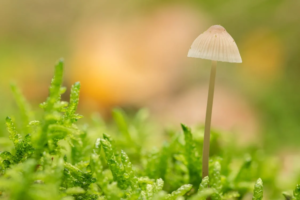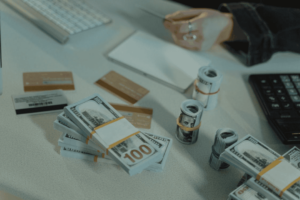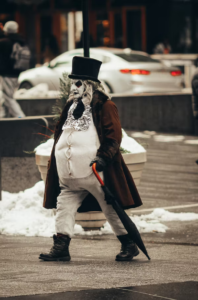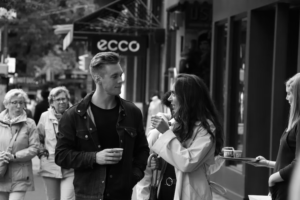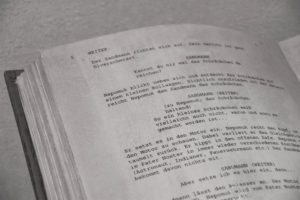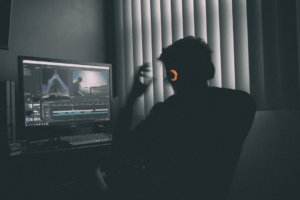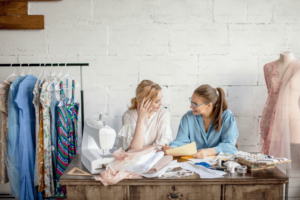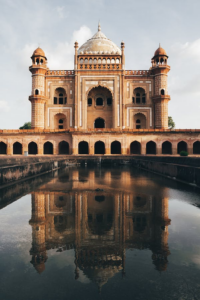Film lights create an atmosphere for your film which is essential to any filmmaker’s success.
Film Lighting Equipment and Techniques Everyone on Set Should Know
Key Light
As the most direct and intensive light source, the key light will act as the primary light source in any scene. Using the key light behind the subject will create a dramatic mood. However, you should not put it close to the camera, as this will make the light featureless and flat. In the three-point setup, the key light functions as the primary light.
High-Key Lighting
This style of lighting reduces the light ration in a scene. It is used in film, photography, or television. Today’s filmmakers use it to adjust a scene’s tone as well as mood.
 Scene from “Harry Potter”
Scene from “Harry Potter”
Characteristics of high-key lighting include:
- White tones (thanks to bright lights)
- Minimal mid-range tones/blacks
- Hopeful or optimistic tone
This lighting is also often used in pop music videos!
Low-Key Lighting
This lighting style uses a hard light source in order to create a shadowy atmosphere. Blackness and contrast characterize low-key lighting.
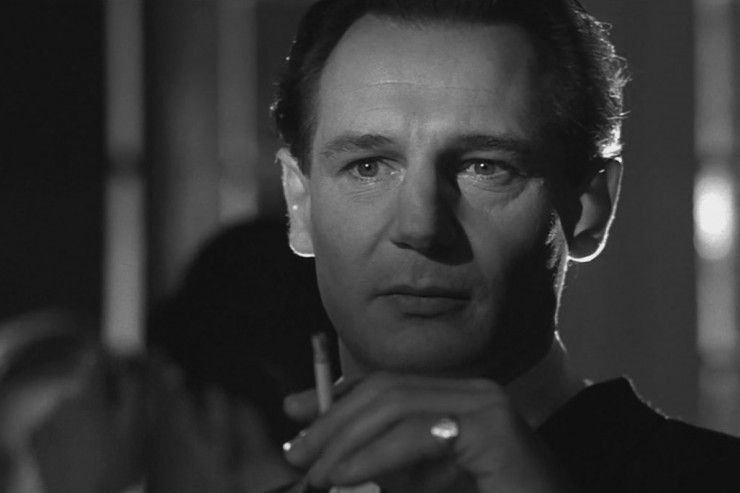 Scene from “Schindler’s List”
Scene from “Schindler’s List”
Low-key lighting characteristics include:
- Blacks, shadows, and dark tones
- Contrast images are striking
- Ominous warning feeling (think: thrillers and noirs)
Fill Light
You place a fill light opposite the key light to cancel shadows the key light creates. Fill lights typically aren’t as powerful as key lights. Fill lights don’t create shadows or their own characteristics.
Backlight
These lights hit an object or actor from behind. You’ll place backlights higher than the subject to separate the it from the background. This action gives it shape and depth while making the frame seem three-dimensional.
Side Lighting
This lighting illuminates the actor from the side, focusing on the face to create a dramatic effect.
Practical Lighting
Practical light can add ambiance. This type of light comes from sources visible within a scene, such as:
- Candles
- Lamps
- Light fixtures
- Television sets
Hard Lighting
This aesthetic creates harsh shadows to bring attention to a certain part of a scene or an actor.
Soft Lighting
This aesthetic does not have many harsh shadows. Soft light is bright and balanced.
Natural Lighting
This technique uses available light. You can learn to work with natural light before moving on to expensive equipment.
Motivated Lighting
A controlled technique, motivated lighting attempts to imitate natural light sources such as the sun or moon.
Bounce Lighting
This technique uses a reflector to bounce light toward the actor from a strong soft, softening and spreading the light.
Two-Point and Three-Point Lighting Setup
A two-point setup uses both a fill and key light so that you can draw a line in the direction of a subject. The 3 point lighting setup is the traditional way to go with a backlight, fill, and key.
Things to Understand About Light Fixtures
Understanding light fixtures will give you a basic background before examining the types of film lights.
Open-Faced Light Fixtures
These fixtures offer hard light that puts a subject in hard shadows. Open-faced light fixtures include the 800W “Redhead” and 2000W “Blonde.”
Fresnel Light Fixtures
A Fresnel lens divides into repeating concentric circles and allows for varied beams. One example of a Fresnel light fixture is the ikan Helia HF40.
Practical Light Fixtures
This source of light comes from an object used as part of filming. Flashlights, lamps, and candles all fall into this category.
Factors Affecting Light Performance
Various factors affect the lighting in the scenes you shoot.
CRI
The Color Rendering Index, or CRI, explains how a source of light affects an object’s color (compared to color from natural light).
Color Temperature
Color temperature is a white light’s “color.” Light may be cool, like blue, or warm, like yellow or orange, and can play into the tone of your story.
Sources of Light
Light sources will change based on which bulb you use.
Reflector/diffusers
You can enhance natural light with an inexpensive folding five-in-one reflector.
Tungsten (Quartz Halogen/Tungsten Halogen) lights
Tungsten lights use incandescent filament bulbs. Each bulb contains halogen gas. Arri and Ianiro are the main high-quality makers of these bulbs. Tungsten bulbs are similar to incandescent filament bulbs common in interior lighting. Because they work at a high temperature, they are more luminous and have a higher color temperature. Uses of tungsten lights include:
- Interiors
- Domestic settings
- Office interiors
- Mimicking the light of the day
Advantages:
- Exceptionally balanced CRI means they relate true color information
- Nearly perfect color rendition
- Inexpensive/cheap to rent
- No mercury
- Instant full brightness
Disadvantages:
- Very hot
- Requires high power
- Sensitive to oil
- Can blow up and send out shards of hot glass; a layer or screen may protect you
- Comparatively shorter life; bulbs need to be replaced often
HMI lights
Hydrargyrum medium-arc iodide, or HMI lights, are capable of more power than regular incandescent lamps. They’re great for large sets. Use these lights when you require high output, such as to mimic the shining sun.
Advantages:
- Higher efficiency
- Light output is high
- Color temperature is high
Disadvantages:
- Expensive
- Requires a lot of power, often needs generators
- More set-up/take-down, because they need an attached ballast to regulate the arc lamp
- Doesn’t dim that much and will increase color temperature when dimmed
- Will explode if dropped, releasing toxic chemicals
Fluorescent lights
Fluorescent light bounces low-pressure mercury vapor to make ultraviolet light. These lights offer better efficiency than incandescent light, generating an output like the HMI and achieving up to 99 CRI. You’ll use it to light up interiors.
Advantages:
- High efficiency
- Cool
- Requires low power
- Inexpensive
- Lamp lasts a long time
- Even, soft lighting over large areas
- Lightweight
Disadvantages:
- Flicker
- Although you can take bulbs out to reduce the intensity, you won’t have much control
LED lights
Then there are super-efficient LED (light-emitting diode) lights. Current uses are limited, but the uses are constantly expanding. Many use Sony NPF batteries. LEDs are increasingly common on sets. The Aputure Amaran 672 are relatively affordable and have a high CRI. You can also find mini LEDs.
Advantages:
- Even and soft lighting
- Easily filtered
- Incredibly efficient
- Consumes less power
- Can be powered by batteries
- Excellent dimming
- Long lifespan
- Good for the environment
- Not shock-sensitive
- Won’t explode
In terms of disadvantages, LEDs are still relatively expensive.
If you’re working with LEDs, you need lighting stands such as Lumo Pro LP605.
Luminous Efficiency
Luminous efficacy measures how good a source of light is at emitting visible light when it uses a certain amount of power.
Cinematic Lighting
This technique adds atmosphere, drama, and depth beyond a traditional three-point setup. It uses lighting tricks like diffusing or bouncing light and adjusting the color temperatures.
Why Is Lighting Important?
Lighting plays many important roles. It,
- Lets an audience know where they should look
- Reflects a character’s psychology
- Supports and defines the genre
Who Determines the Lighting Setup in a Scene?
Various people determine lighting:
- Directors: share visual ideas and inspiration
- Cinematographers or directors of photography: create the lighting plan
- Gaffers: design and execute the lighting plan from the cinematographer and oversee the crew
Which Lights Should You Use?
Every light has a special purpose. When shopping for lighting, consider what you want to do and achieve on set. A good understanding of mixed sources is important. You’ll consider lighting from the pre-production stage and beyond.
How to Create a Simple Yet Effective Lighting Setup
A 3 point lighting setup is the most traditional setup. To create it, place your key light to the side of the actor. Then, add the fill light on the opposite side. Finally, place the backlight behind the actor.
Budget Lighting: How You Can Light a Scene Without Using Professional Equipment
Use inexpensive clamp lamps or builders’ work lights. Roberto Rodriguez even used high-powered torches for his debut El Mariachi. You can also put high-powered CFL bulbs, China balls, or standard light fittings.
Resources for purchasing lighting equipment
Production Lighting and Beyond
Once you’ve learned about lighting, you can explore equipment like diffusion, gels, and flags. You’ll need to learn about gear as well as cinematography as you hone your craft. You can learn more about film and how you can improve your skills by applying to the Nashville Film Institute here.
